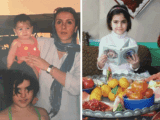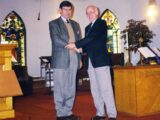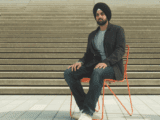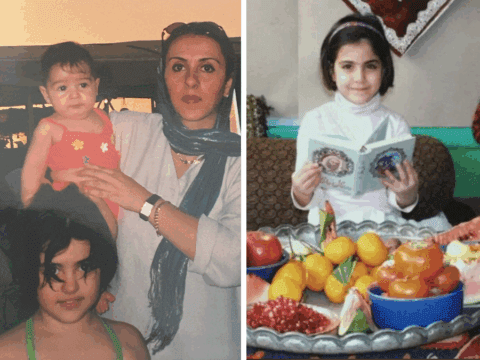Kevin Welbes Godin is an activist and retired teacher who spent half of his 30-year career advocating for LGBTQ2 students and teachers in Catholic school boards across Canada. Godin, who is an ally, has facilitated workshops on LGBTQ2 inclusion with thousands of Catholic school teachers and administrators across the country. He spoke with Jenna Tenn-Yuk.
Jenna Tenn-Yuk: How did you get into teaching?
You may unsubscribe from any of our newsletters at any time.
Kevin Welbes Godin: I was in the seminary and studying theology at Regis College from 1982 to 1984, but I decided to leave because I fell in love. I became a Catholic teacher because my father was a teacher and I knew the Catholic school system would be the best spot for me to apply my education and pastoral experience.
JTY: What were Catholic schools like for LGBTQ2 students and teachers when you started?
KWG: The Catholic school system had many taboos around sexuality, so talking or educating about anything outside of heteronormativity was absent. There wasn’t a lot of language to even talk about it. There was a lot of secrecy.
But shortly after I started teaching in 1985, the AIDS crisis began, and that provided an opportunity for teachers to come together and talk. A colleague and I sent an informal invitation to folks to meet and discuss how to offer safer spaces for LGBTQ2 Catholic teachers. As an ally who was straight, I probably had a lot more leverage than what my queer colleagues could voice at the time.
More on Broadview: How to be a better LGBTQ2 ally
JTY: Tell me about the meetings.
KWG: It started in homes and off-school sites in order to be safe. There were about 15 people attending, which was a significant number for a Catholic school board. We met once a month for two years. Since it was pre-internet, all of the invitations went out by letters through the school courier system. Unfortunately, a superior of mine in [Ontario’s] Dufferin-Peel board opened one of the letters. That put these Catholic LGBTQ2 teachers in jeopardy, so the group fizzled. There wasn’t the confidence to continue meeting.
JTY: Did you keep organizing?
KWG: I didn’t. The spirit wasn’t in the air for me to do that again until the early 2000s, when the students reignited my involvement.
JTY: When did you start your workshops?
KWG: In 2009. I worked under the direction of [LGBTQ2 advocacy group] Egale Canada to offer training workshops to Catholic teachers on LGBTQ2 inclusion.
But at first the Catholic school boards weren’t letting me in. On one of my first days, I was handed a memo from the Ontario bishops to all Catholic school board directors. It basically said they will handle all education. If you read between the lines, this insinuated to not let Egale Canada do any of the schools’ LGBTQ2 inclusion work. So I knew pretty quickly that there wasn’t going to be any kind of willingness.
For the first three years, I made valiant efforts to communicate with the school boards and invite them to do training with their teachers. I heard a roaring silence from every board director across the province. The Catholic school boards were under the moral direction of the bishops, and nobody had the courage to step out of that to protect kids or provide the education teachers needed.
JTY: So how were you able to run your workshops?
KWG: Through the Catholic teachers’ union. I was seconded through the OECTA [Ontario English Catholic Teachers’ Association], and that gave me access to the teachers through their union. But it meant only teachers could be trained, and only after school hours, on their own time.
JTY: What did the workshops look like?
KWG: The kinds of conversations that were happening were basic — things like what language to use with LGBTQ2 students. But most importantly, it was about how teachers could be allies.
I think it was pretty bold for some of those teachers to come to those workshops, because this was the first time they were happening. I believe that many of them were at the forefront in their own schools to get things going on their gay-straight alliances.
“My hope is that student voices will continue to be strong and that LGBTQ2 inclusion will one day be the norm so this work has a lasting effect on the system. I dream that the arms of churches will fully embrace their LGBTQ2 family members and that the church will come to see its own fragility.”
JTY: What opened the door for more conversations about LGBTQ2 inclusion in Catholic schools?
KWG: Bill 13, the Accepting Schools Act, encouraged that. It passed in 2012 and required schools to allow GSAs (gay-straight alliances). But before that, students had really opened up the conversation. They forced the Catholic school boards to co-operate. One student in particular, Leanne Iskander, was determined to start a GSA at St. Joseph Secondary School in Mississauga, Ont., in 2011. Her school’s administration and the school board gave her an extremely hard time. But she persisted, and has since won multiple awards for her pivotal student activism. I remember seeing her at her first Pride event with about 100 other students.
JTY: What kept you motivated?
KWG: My motivators have always been LGBTQ2 students. The nameless, voiceless, invisible kids who are in a Catholic school system that has all kinds of wonderful language around inclusion, but who don’t feel or experience acceptance when they walk through the doors.
JTY: What progress has been made?
KWG: There have been more open conversations about LGBTQ2 inclusion in society and consequently within the church. I’ve seen GSAs start in many Catholic secondary schools across Ontario. I’ve seen a couple of Catholic school boards bring GSAs together so kids can network, learn and not feel alone. Thousands of Catholic teachers have been trained, which means the conversation continues to go deeper in classrooms. This has a ripple effect on what students are allowed to do in schools in terms of their own leadership, inclusion, and being affirmed by their teachers and administrators.
JTY: What work is still needed?
KWG: Schools still have spaces that aren’t safe for LGBTQ2 kids, particularly trans kids. We’re still waiting for an LGBTQ2 curriculum to assist teachers to have these conversations in classrooms, or for elementary teachers to read story books about two moms or gender-nonconforming kids.
JTY: What are your hopes?
KWG: I hope that inclusive education continues. I hope that student voices continue to be strong and that LGBTQ2 inclusion will one day be the norm, creating a lasting effect on the system. I dream that the arms of churches will fully embrace their LGBTQ2 members and that the church will come to see its own fragility.
This interview has been edited and condensed for clarity. It first appeared in the September 2019 issue of Broadview with the title “Barrier bust.” For more of Broadview’s award-winning content, subscribe to the magazine today.
















Great work for Catholic students and teachers – Bravo for the courage to keep going despite the institutional barriers.